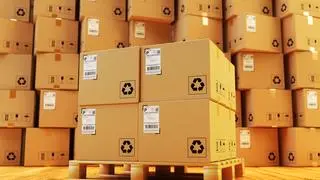We have used microorganisms — bacteria — for many purposes, including making drugs. Can they also be used to make engineering materials? Such as aerospace panels and vehicle frames? Before you say “what rubbish!”, pause. Don’t forget that bones, teeth and crab shells are some of the ‘living’ things that are also examples of strong structures. Scientists at the University of Southern California’s Viterbi School of Engineering thought hard about this and began harnessing live bacteria to create engineering materials that are strong. Their research has been published in Advanced Materials .
Researchers led by Qiming Wang chose a bacterium called S pasteurii , which is known for secreting an enzyme called urease. When exposed to urea and calcium ions, urease produces calcium carbonate — the basic mineral for bones and teeth. They ‘guided’ the bacteria to grow calcium carbonate to achieve ordered microstructures. They 3D-printed a lattice structure (or scaffolding), which had empty squares within it at varying angles. Then they introduced the bacteria into it. Bacteria like to attach themselves to surfaces and hence they gravitate to the scaffolding, grabbing the material with their ‘legs’. There they secrete urease, eventually filling all the tiny gaps. Testing showed the mechanical strength of these materials to be very high, including resistance to cracking.
So, what can you use the material for? Apart from aerospace panels and vehicle frames, there’s body armour, defence vehicle armour and bulletproof vests. You can even use these bacteria for repairing things, says a press release from USC.








Comments
Comments have to be in English, and in full sentences. They cannot be abusive or personal. Please abide by our community guidelines for posting your comments.
We have migrated to a new commenting platform. If you are already a registered user of TheHindu Businessline and logged in, you may continue to engage with our articles. If you do not have an account please register and login to post comments. Users can access their older comments by logging into their accounts on Vuukle.